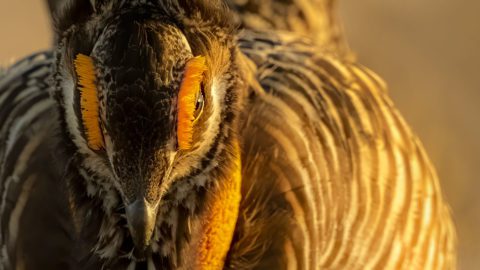The View From Sapsucker Woods: See the Rain Here on Earth
By John W. Fitzpatrick
NASA Photo ID AS08-14-2383, courtesy of the Earth Science and Remote Sensing Unit, NASA Johnson Space Center. April 2, 2020From the Spring 2020 issue of Living Bird magazine. Subscribe now.
‘Til forever, on it goes
Through the circle fast and slow
I know—it can’t stop, I wonder.
I want to know, have you ever seen the rain
Comin’ down on a sunny day?
John Fogerty wrote these legendary lines as Creedence Clearwater Revival was privately disintegrating while its global fame was soaring. The allegory of rain on a sunny day acknowledges a profound reality: Trouble can fester to a breaking point even while all seems rosy from the outside. I have always loved Fogerty’s play on the wonder of earth’s most precious gift to us—the perpetuity of rainfall.
Driving our fascination with extraterrestrial bodies from moons and Mars to exoplanets across the galaxy has always been the all-consuming question: Is there any water out there? Martian ice caps and frozen oceans on Ganymede notwithstanding, it is pretty clear that things are dreadfully dry out in space. We, on the other hand—thanks to a quirky combination of size, spin, distance from a medium-sized star, and primordial chemistry—are blessed with liquid water, without which life would never have evolved.
On Christmas Eve, 1968, just a few months before the first moon walk, Apollo 8 astronaut Bill Anders snapped what many regard as the most iconic environmental image ever taken. Surprised by an “earthrise” outside his tiny window while orbiting the moon, Anders hurriedly loaded color film and captured for the ages the extraordinary contrast between his parched lunar landscape and the humble blue sphere 240,000 miles away. Also captured by Anders’s photo is something even more amazing, and the reason why our planet looks blue: We have a razor-thin gaseous atmosphere that traps water and constantly recirculates it as clouds and rain in an ever-changing design. Evidence of increasing carbon dioxide levels in that atmosphere was accumulating as Apollo 8 splashed back to earth. Today, effects of climate change on weather make the news nearly every day, and speaking of rain, 2019 was the wettest 12-month period ever recorded in the United States.
How we humans choose to manage our precious freshwater and the diversity of life that depends upon it has been a fundamental concern in our country ever since the days of the Apollo program. The Clean Water Act of 1972 coded this concern into law, and a series of amendments and administrative rulings have further defined and strengthened how our federal government protects the so-called “Waters of the United States.” Strengthened, that is, until this year. Radical new rules recently finalized by the current administration eliminate federal protection for more than half of our country’s freshwater wetlands, a fifth of our streams, and all manner of groundwater, ephemeral ponds, and marshes that connect bodies of water below the surface. Developers, farmers, industries, and private landowners are now free to pollute, ditch, drain, plow under, and build on top of a host of wetland habitats upon which an extraordinary array of living systems depend, including our own.
In a scathing rebuke, the EPA’s Science Advisory Board found that the new rules “lack a scientific justification, while potentially introducing new risks to human and environmental health.” These environmental rollbacks are an affront to our country’s long-standing appreciation that all aquatic habitats are essential to our functioning natural systems. For generations, we have treated this as a bedrock value in our country… but rain is now comin’ down on those sunny days. We must fight this rule. Nothing should deter us from rejoicing in our planet’s special miracle of liquid water, nor from committing ourselves to permanently safeguarding the habitats created by this most precious of Earth’s resources.

All About Birds
is a free resource
Available for everyone,
funded by donors like you
American Kestrel by Blair Dudeck / Macaulay Library



